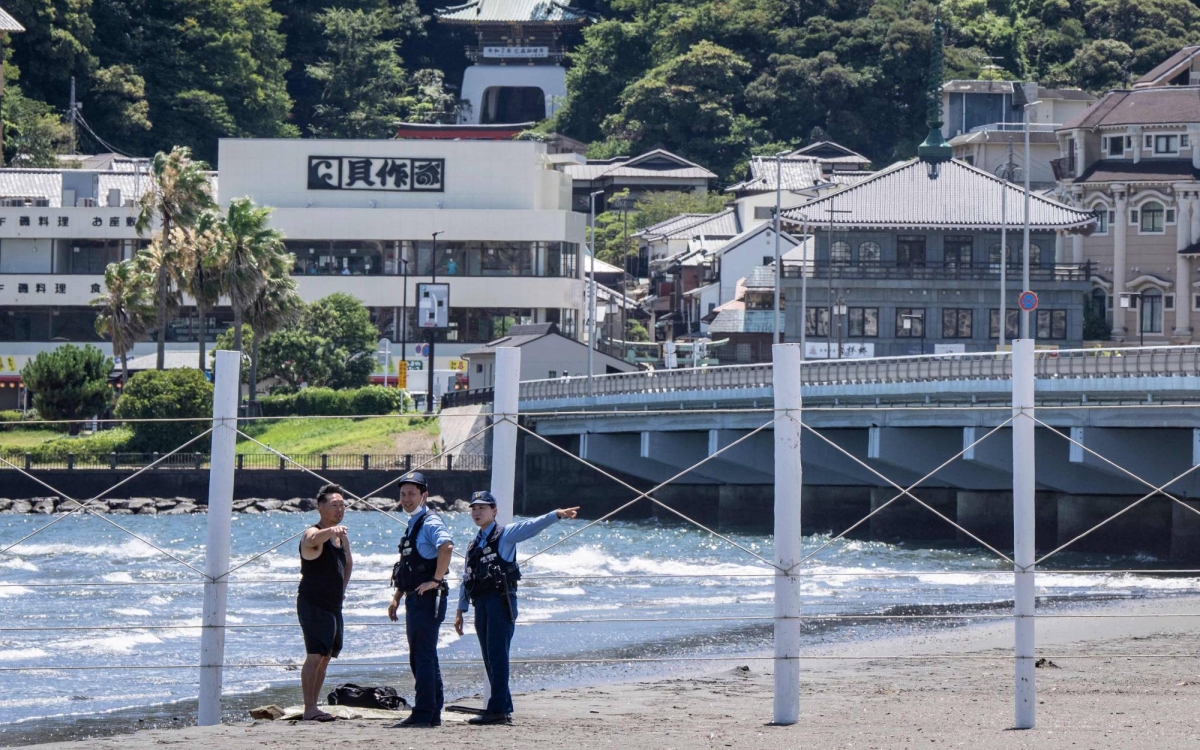
The Japan Meteorological Agency headquarters in Tokyo. Photo: Jiji Press
The agency at 10:45 am lifted the advisory for coastal areas between Tokyo Bay and Okinawa, except for some locations.
The measure is still in place for Pacific coastal areas between Hokkaido and Chiba Prefecture, east of Tokyo, as well as for Tokyo's Izu Islands and the Tanegashima and Yakushima islands in Kagoshima Prefecture, which neighbors Okinawa.
While over 24 hours have passed since a strong earthquake occurred near Russia's Kamchatka Peninsula on Wednesday morning, tsunamis were repeatedly observed across Japan, with some locations recording their highest waves on Thursday.
According to the Fire and Disaster Management Agency, 229 municipalities in 21 prefectures had issued evacuation orders as of 5:00 pm Wednesday, affecting a total of 2.01 million people.
At a press conference Thursday, Chief Cabinet Secretary Yoshimasa Hayashi said tsunamis left one person dead in Mie Prefecture, central Japan, another person severely injured in Hokkaido, six others with minor injuries in Hokkaido and Miyazaki Prefecture, southwestern Japan.
The central government is checking the severity of injuries three other individuals incurred while evacuating, Hayashi said, adding that 11 people were taken to hospital for heatstroke from evacuation shelters and other locations.
The highest tsunami observed in Japan was a 1.3-meter-high wave at a port in Kuji, Iwate Prefecture, northeastern Japan, at 1:52 pm Wednesday, according to the JMA.
Some areas recorded their highest waves on Thursday, with waves of 70 centimeters reaching Hiroo, Hokkaido, at 1:18 am and Oarai, Ibaraki Prefecture, eastern Japan, at 2:27 am.
Shimoda in the central prefecture of Shizuoka recorded 60 centimeters at 12:06 am, as did Tosashimizu in the western prefecture of Kochi at 4:07 am.
A wave of 50 centimeters arrived at the Kagoshima city of Shibushi at 6:39 am.
JMA official Masashi Kiyomoto said that the temblor unleashed two types of tsunami, including one that directly travels from the epicenter to Japanese coasts.
The other hits Japan after bouncing off the vast Hawaiian-Emperor seamount chain stretching from an area southeast of the Russian peninsula to near the Midway Atoll.
While tsunamis that directly hit Japan have a long period of high and low waves, the cycle is shorter for the deflected tsunamis.
When waves of both tsunami types merge, this creates a bigger tsunami wave.
A similar phenomenon occurred in November 2006 and January 2007, when Japan was hit by tsunami waves from quakes that occurred east of the Chishima Islands, also known as the Kuril Islands.
The Hawaiian-Emperor seamount chain is a group of deep-sea volcanoes located at an ocean depth of about 5,000-6,000 meters. Some volcanoes are more than 4,000 meters high.



Max: 1500 characters
There are no comments yet. Be the first to comment.